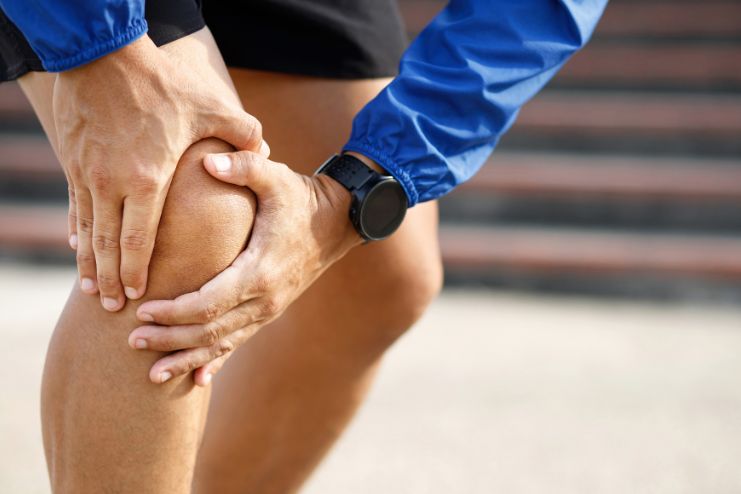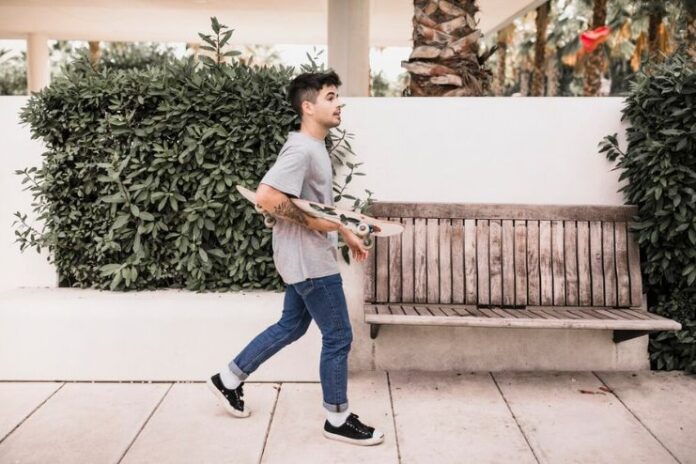Affiliate Disclaimer
Some links in this article are affiliate links. We may earn a small commission if you make a purchase through these links, at no extra cost to you. We only recommend products we find useful to our readersSome time ago, walking backward or retro-walking was considered weird or obscure; nowadays, however, it has found acceptance as an interesting and useful activity for enhanced brain and joint functioning.
This movement causes the various body parts to work in novel ways, activating different muscles, enhancing coordination, and drawing further on cognitive activity. Studies show that backward walking can decrease knee pain, enhance balance, and improve neurological function by asking more about your concentration, mental effort, and neuromuscular control (R).
Retro-walking benefits joints by diminishing wear and tear, improving mobility, and enhancing cognitive functions. The ones who give walking backward a try might just be happily surprised by its pronounced benefits.
This article aims to give a brief overview of backward walking and its effects on the functioning of the brain and joint health, followed by some safety tips for conveniently integrating this into your daily regime.
Also, Read Color Walk Therapy: How Walking with Colors Can Boost Your Mood and Creativity
The Science Behind Backward Walking

Backward walking does provide some interesting differences in body and brain engagement, thereby offering contrasting benefits from forward walking.
Muscle Activation
Retro-walking requires more coordination and control, making it a beneficial exercise for the hamstrings, calves, and glutes, respectively. Such an uncommon mode of locomotion can enhance your proprioceptive faculty, that is, the ability to know where your body is in space; thus improving your stability.
Cognition Activation
Backward walking is a great way to stimulate the human brain’s cognitive processes (R). Increased prefrontal cortex activity, specifically linked to problem-solving and decision-making, substantiates cognitive activation during this form of walking. The neural activity arising from backward walking may lead to better memory and mental alertness.
Metabolic Response
Backward walking requires energy input from within the body. Due to its high energy expenditure, it increases heart rate, causing enhanced calorie output. Hence, it can be identified as a good cardiovascular workout.
Joint Dynamics
Backward walking changes the oblique joint dynamics (R), places lesser loads on the knees, and might help alleviate pain related to osteoarthritis; thus, it could be considered an excellent rehabilitation exercise for patients presenting with joint problems.
By this token, backward walking could be a part of healing with multiple physical and cognitive benefits.
Brain Benefits of Walking Backward

Walking backward, also known as retro-walking, is not just a physical exercise—it also stimulates brain function in ways that forward walking does not. This unique movement pattern engages different neural pathways, improving cognitive function, memory, and coordination.
1. Enhances Memory and Cognitive Processing
Retro-walking challenges the brain to think differently, activating memory centers such as the hippocampus. Studies suggest that performing tasks in reverse, including walking, can enhance recall and cognitive flexibility (R). A study published in Cognition found that moving backward helps individuals retrieve memories more effectively than moving forward (R).
2. Improves Mind-Body Coordination and Reaction Time
Walking backward requires a heightened awareness of balance and coordination, as you cannot rely on vision as much as with forward walking (R). This increases neural communication between the brain and muscles, improving reflexes and reaction time. Research in Frontiers in Human Neuroscience indicates that backward walking enhances motor control and spatial awareness (R).
3. Boosts Mental Alertness and Focus
Because retro-walking is an unfamiliar movement, it forces the brain to stay engaged and make real-time adjustments. This cognitive challenge increases focus and mental sharpness, making it a potential exercise for brain health and neuroplasticity. A study from the European Journal of Applied Physiology highlights how retro-walking enhances neural adaptability (R).
Backward walking is more than just a physical activity—it provides a powerful cognitive boost, supporting brain health and mental agility. Adding this simple yet effective exercise to your routine can promote long-term neurological well-being.
Joint and Muscle Benefits

Retro walking or walking backward is an underrated but powerful exercise that is uniquely beneficial for joints and muscles. Unlike traditional forward walking, backward walking minimizes knee stress, strengthens key muscle groups, and improves overall mobility.
1. Adds Stress Reduction on the Knees; Increases Joint Mobility
Due to biomechanics and pressure distribution, backward walking minimizes the impact on the knee joints. Research finds that retro walking reduces the load and is a very effective rehabilitation method for patients with knee pain (R), such as osteoarthritis, measured by changes in the patellofemoral joint (kneecap). According to research conducted and published in the Journal of Biomechanics, backward walking decreases compression forces in joints and has been proven to reduce strain and chances of injury (R).
2. Uses Different sets of Muscles
Backward walking exercises also have a few relatively underworked muscles, while this exercise particularly enhances the hamstrings, glutes, and calf muscles and core stability. According to a study in the Journal of Sports Sciences, backward walking has increased the activation of the hamstrings by 30%, as compared to activation by forward walking (R).
Thus, retro walking would be a useful technique to develop conditions for injury prevention and for strengthening the lower body.
3. May Assist in Healing Knee Pain and Injury
Retro-walking is a technique used in physiotherapy to help patients recover from knee pain following injuries such as ACL tears and meniscus damage. Researchers from Clinical Rehabilitation showed that backward-walking participants gained meaningful pain reduction and mobility quicker than traditional forward walkers (R).
Backward walking is an excellent, low-impact workout that can build up muscles without damaging joints. Integrating it into your fitness regime can be the final touch in keeping joints healthy while progressing from rehabilitation to achieving new levels of lower body strength and mobility.
How to Safely Incorporate Backward Walking into Your Routine

Backward walking should be very carefully implemented so that there is no falling and gains are maximized. This is how you can manage this safely in the routine.
1. Environment Selection
Because backward walking tests balance and coordination, choose a safe site. Some examples of good site conditions include:
- Flat open spaces with no obstacles for free walking, such as a park, treadmill, or sports track.
- Indoor areas may have railings or walls for that much-needed initial support.
- Soft yet stable surfaces, despite being grass fields, reduce impact.
2. Go Slow and Use Support if Needed
Start backward slowly and focus on the form as follows:
- Keep the upper half of the body erect, and do not lean too far forward or back.
- Take small, carefully controlled steps toward achieving balance.
- Use a handrail, partner, or walking stick for support in the early days.
3. Combine It with Forward Walking
So that you can maximize its effect and at the same time lessen fatigue caused by this exercise, you should include backward walking in your other regular walking:
- Walk forward for 2 to 3 minutes and backward for 30 to 60 seconds.
- Repeat this cycle for 10 to 15 minutes.
- Then, gradually increase the backward walking time as you progress.
4. Involve Core Muscles for Superior Stability
For balance, backward walking needs more core engagement than forward walking. Work on your core with:
- Plank hold or plank hold step-ups and side plank.
- Knee raises standing.
- Stability exercises, with one leg standing.
5. Progress to More Difficult Variations
Start with the basics as you gain confidence and comfort. You may add:
- Incline backward walking for more leg muscle involvement.
- Retro-walking with resistance bands, where strength training is added by introducing resistance.
- Backward jogging is an advanced variation that will improve cardiovascular fitness.
Backward walking has many advantages, as it can be a safe and effective exercise for muscle activation, brain function, and joint health. To better enjoy such benefits, start backward walking in a controlled environment, maintain the right posture, and gradually increase the amount of time you’re walking backward.
Also, Read: Yoga For Brain Power – 10 Poses To Boost Your Memory And Willpower
Final Thoughts
Once frowned upon as obscure or eccentric, backward walking or retro-walking is now beginning to gain the respect it deserves for the wondrous benefits it brings. This ancient walking form is a movement that works out the brain, strengthens specific muscle groups, and reduces stress on the joints, thereby holistically benefiting both physical and mental health.
The backward walking activity challenges the active but commonly unused muscle groups that help treat and prevent knee pain, enhance balance, and increase mobility of the joints.
Its cognitive benefits, from boosting memory and coordination to sharpening alertness, make it a valuable addition to any exercise program. Since it is a low-impact activity, it is well-suited for participants of all levels, especially those recovering from injury.
You may incorporate retro-walking into the workout without making any drastic changes. Whether in the form of a warm-up, rehab-related work, or an advanced challenge, there are only benefits. Slowly and steadily, taking proper precautions during retro-walking can do wonders for your body.
References
- https://www.verywellhealth.com/walking-backwards-8771760
- https://www.uclahealth.org/news/article/walking-backward-may-have-link-increased-cognition
- https://www.nationalgeographic.com/science/article/benefits-of-walking-backwards
- https://health.clevelandclinic.org/benefits-of-walking-backwards
- https://www.sciencedirect.com/science/article/abs/pii/S0010027718302667
- https://link.springer.com/article/10.1007/s00421-020-04472-w
In this Article

























